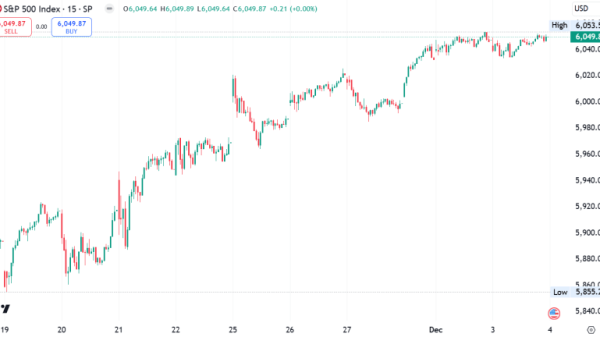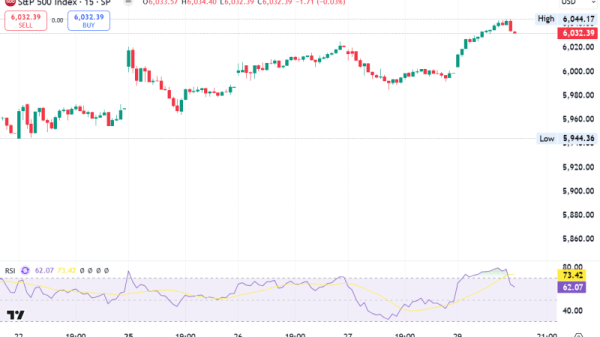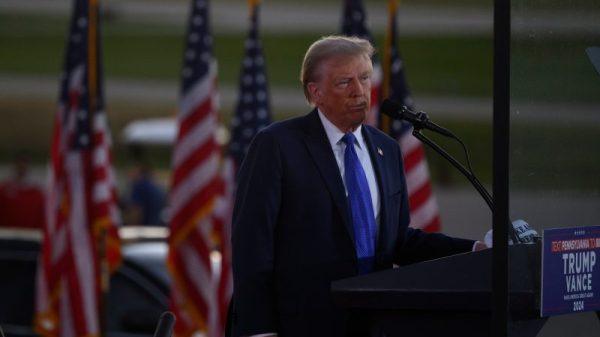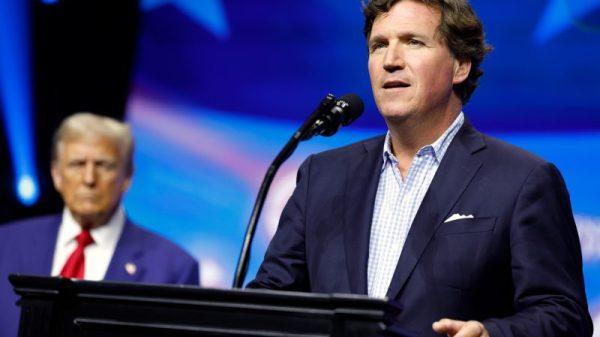By Cassandra Garrison, David Shepardson and Ben Klayman
MEXICO CITY/DETROIT (Reuters) – U.S. President-elect Donald Trump’s plan to slap a 25% tax on all imports from Mexico and Canada could strike the bottom lines of U.S. automakers, especially General Motors (NYSE:GM), and raise prices of SUVs and pickup trucks for U.S. consumers.
GM leads the automakers that export cars from Mexico to North America. The top 10 car manufacturers with Mexican plants collectively built 1.4 million vehicles over the first six months of this year, with 90% heading across the border to U.S. buyers, according to the Mexican auto trade association.
Other Detroit manufacturers will likely also feel the pain: Ford (NYSE:F) and Stellantis (NYSE:STLA) are the top U.S. producers in Mexico after GM, whose shares fell on Tuesday, the day after Trump’s tariff announcement.
GM is expected to import more than 750,000 vehicles from Canada or Mexico this year, with most manufactured south of the border, according to business analytics firm GlobalData.
They include some of GM’s most popular vehicles, including nearly 370,000 Chevy Silverado or GMC Sierra full-sized pickups and nearly 390,000 midsized SUVs.
GM’s Mexican plants also build two of its critical new electric vehicles, battery-powered versions of its Equinox and Blazer SUVs. Those GM models and others are already in the crosshairs of another expected Trump policy: ending a $7,500 EV subsidy, a move first reported by Reuters.
GM, Stellantis and Ford declined to comment on Trump’s proposed tariffs.
Kenneth Smith Ramos, Mexico’s former chief negotiator for the USMCA trade pact, said the move could hurt the United States as much as its North American trading partners.
“The U.S. would be shooting itself in the foot,” he said. The impact on Mexico’s auto industry would also be “very negative.”
GM employs 125,000 people in North America; a decline in sales of its Mexico-made cars could hurt its profit for the entire region, potentially putting pressure on payrolls on both sides of the border.
The tariff hikes would also serve as a reminder of the supply chains, which closely bind the three members of the United States-Mexico-Canada Agreement. Mexico and Canada account for more than 50% of all auto parts exported to the United States – sending nearly $100 billion in parts. Imposing the tariffs would increase the costs of all vehicles assembled in the United States.
TARIFFS, DRUGS AND IMMIGRATION
The vast impact of Trump’s threatened tariffs on Mexico and Canada raises questions about what the incoming administration is trying to accomplish economically and the potential collateral damage to U.S. companies and consumers.
Trump billed the action as a punishment for the unrelated problems of immigration and the trafficking of the drug fentanyl, posting on social media that the tariffs would remain in place until Mexico and Canada halt what he called an “invasion” of “Illegal Aliens.”
The reference to drugs and migration have led some analysts to predict the tariffs are more of a negotiating tactic than a genuine policy proposal.
“Given the (social media) post makes an explicit reference to the flow of people and drugs across the southern and northern borders, it suggests this specific tariff threat is more of a negotiating tool than a revenue raiser,” said Thomas Ryan, North America economist at Capital Economics.
“It leaves the door open to Canada and Mexico coming up with a credible plan over the next two months to try and avoid those tariffs,” he added.
Mexican President Claudia Sheinbaum called for a dialogue with Trump and warned the proposed tariff’s lacked “sense” and would worsen inflation and kill jobs in both countries. She also raised the specter of retaliation, although given its vast flow of exports to the U.S., Mexico’s economy remains more vulnerable to tariff threats.
Trump’s import taxes could also theoretically stop Chinese automakers from using Mexico as a way around steep U.S. tariffs on Chinese EVs, but those imports are already effectively blocked by other U.S. trade barriers.
Shares of GM were down 8.2% late on Tuesday afternoon, while Stellantis fell 5.5% and Ford shares were down 2.6%.
HIT TO CONSUMERS
Free trade with the U.S., first in the form of NAFTA and then as USMCA, transformed Mexico’s nascent automotive industry into the country’s most important manufacturing sector and the poster child of its export prowess. But 30 years after NAFTA’s establishment, Trump has put that all on the line.
In the hyper-competitive world of car and truck production, a 25% tariff could kneecap a Mexican industry that has spent years tightly integrating itself with the U.S., the destination of nearly 80% of all Mexican-made vehicles.
Higher tariffs would also hit U.S. consumers. While the company that imports goods into the U.S. directly pays the tariff, that cost is inevitably passed on to the consumer via higher prices.
“That’s how tariffs work. Even though the (Trump) administration might want to spin it that Mexico is paying … ultimately the consumer will bear this,” said Sudeep Suman, a managing partner with consultancy AlixPartners.
That could hit many pickup trucks popular in rural parts of the U.S. that overwhelmingly voted for Trump. Notably, the Toyota (NYSE:TM) Tacoma, Ford Maverick, Stellantis’ Ram, and GM’s Chevrolet Silverado and GMC Sierra are all made in Mexico.
GM might be able to absorb some costs from its highly profitable pickup trucks but other manufacturers selling lower-cost vehicles like the Nissan (OTC:NSANY) Sentra could find it difficult to continue building profitable models, said Sam Fiorani, industry analyst at AutoForecast Solutions.
“Somebody is going to have to eat that cost and that is going to the manufacturer or customer,” Fiorani said. “All vehicles sold in the United States would be more expensive or considerably less profitable.”
Tariffs could also hit the cost of vehicle production in the U.S. because so many parts now come from Mexico. The Latin American nation represents 43% of all U.S. auto-part imports, larger than any other country.
Francisco Gonzales, head of Mexico’s National Industry of Autoparts, said regional cooperation across North America brings down costs for customers.
Automakers “cannot be producing everything in a single country,” he said, “because it makes it uncompetitive.”




































